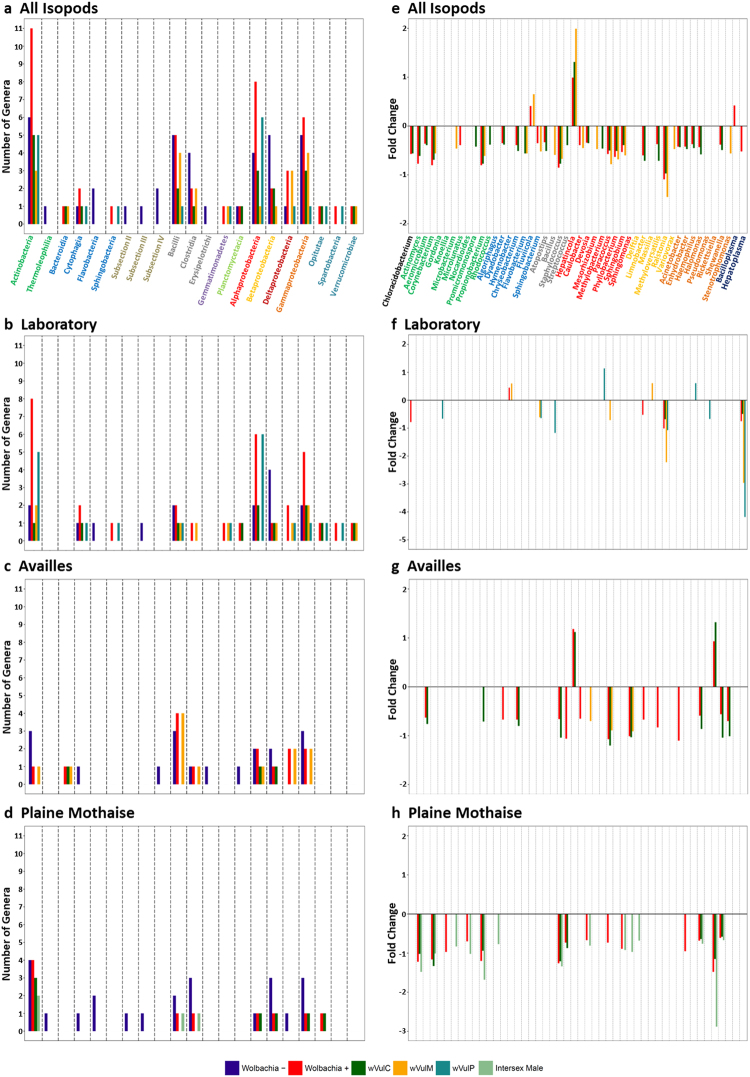Figure 4.
Differentially abundant bacterial taxa. (a–d) Histograms showing the distribution of genera per bacterial class which were specifically present or absent depending on Wolbachia infection, for all isopods independent of host origin (a) as well as for each population separately (b–d). (e–h) show the fold changes of the 48 genera identified as differentially abundant depending on Wolbachia infection using DESeq. 2, for all isopods independent of host origin (e) as well as for each population separately (f–h). The taxonomic identifications shown in (a) and (e) apply to all other panels and are colour-coded depending on bacterial phylum (or class for Proteobacteria): Acidobacteria = black, Actinobacteria = dark green, Bacteroidetes = light blue, Cyanobacteria = brown, Firmicutes = grey, Gemmatimonadetes = purple, Planctomycetes = light green, Alphaproteobacteria = red, Betaproteobacteria = light orange, Deltaproteobacteria = dark red, Gammaproteobacteria = dark orange, Tenericutes = dark blue, Verrucomicrobia = Cyan.

